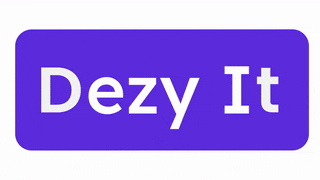Is AI Medical Scribing the Answer to Clinician Burnout?
- sia699
- Mar 12
- 3 min read
Updated: Mar 23

Clinician burnout has become a growing crisis in the UK, with over 60% of NHS doctors reporting high levels of stress and exhaustion. A significant factor contributing to this is the burden of medical documentation, which can consume up to 50% of a doctor’s working hours. AI-powered medical scribing is emerging as a potential solution, aiming to automate note-taking, enhance efficiency, and improve overall patient care. But how effective is it in real-world UK healthcare settings?
The Administrative Overload in UK Healthcare
The NHS Long Term Plan has highlighted administrative workload as a key contributor to burnout, with doctors spending hours each day completing Electronic Health Records (EHRs), referral letters, and compliance documentation. This not only reduces time for patient interaction but also increases errors due to fatigue. AI-driven medical scribes promise to ease this load by automatically transcribing, structuring, and summarizing patient consultations.
How AI Medical Scribes Work
AI-powered scribing tools use Natural Language Processing (NLP) and Speech Recognition to listen to doctor-patient conversations in real time. These systems:
Convert speech to text with high accuracy
Extract key medical information and structure it into EHRs
Auto-fill forms, prescriptions, and referral notes
Learn clinician preferences over time to enhance efficiency
Unlike traditional transcription services, AI scribes provide real-time documentation without requiring doctors to dictate separately.
Real-World Impact in the UK
Several NHS trusts and private healthcare providers have begun trialling AI scribing solutions, with promising results:
University Hospitals Birmingham NHS Trust reported a 40% reduction in documentation time for clinicians using AI scribing tools.
Private practices using AI scribes noted faster consultation times and improved patient satisfaction as doctors could maintain better eye contact and engagement.
A 2024 study on AI-assisted EHR completion showed a 30% decrease in clinician-reported fatigue compared to manual note-taking.
Challenges and Barriers to AI Scribing Adoption
Despite its potential, AI medical scribing faces hurdles in UK healthcare:
Accuracy and Context Issues – AI models sometimes misinterpret medical terminology or miss contextual nuances, requiring manual review.
Data Security & GDPR Compliance – AI scribes handle sensitive patient data, raising concerns about privacy and NHS data-sharing regulations.
Integration with NHS Systems – Many AI scribing tools struggle to integrate with legacy EHR systems like EMIS and SystmOne, causing workflow disruptions.
Cost of Implementation – While AI scribes save time, upfront costs for AI integration remain a barrier, especially for smaller clinics and GP practices.
The Future of AI in Medical Scribing
With ongoing advancements in AI, speech recognition, and deep learning, AI scribes are expected to become more accurate, secure, and widely adopted across UK healthcare. The NHS AI Lab is already funding research into AI-driven documentation, aiming to refine the technology and address privacy concerns.
Key Future Developments:
AI scribes tailored for UK healthcare regulations
Enhanced speech models trained on regional accents and dialects
Better integration with NHS electronic records systems
Improved accuracy through human-in-the-loop validation
Conclusion
AI-powered medical scribing is not a perfect solution, but it offers a strong potential to reduce clinician burnout, improve efficiency, and enhance patient care in the UK. As AI models evolve and integration challenges are addressed, medical scribing could soon become a standard tool in NHS hospitals and private clinics, transforming how doctors manage their workload.
Learn more:

